|
Eiheiji Temple

|
Eiheiji Temple is one of the most well-known sanctuaries in Japan.
Eiheiji Temple is located in
Fukui Prefecture, and was built in 1246 by DOGEN
(1200-1253)
, who was the founder of Japan's "Soto" Sect.
Eiheiji Temple is in a mountain area.
DOGEN had studied Buddhism in China for five years, and he built a small temple in Kyoto five years after he came back from China in 1233.
However, he was persecuted by those who were against his new sect. He moved to Fukui after following the invitation from HADANO Yoshishige and built a new temple. This is the short history of Eiheiji Temple.
The entrance of Eiheiji Temple

After passing restaurants and souvenir shops in front of Eiheiji Temple, you will reach the entrance of Eiheiji Temple.
This is the border between the places for ascetic practice and secular society.
"Soto" Sect founded by DOGEN is "Zen" Sect. Especially "Soto" sect focuses on ascetic "Zen" practices to attain enlightenment.
The avenue of Japanese cedar trees continues from the entrance to the "Shichido Garan" buildings, which means a group of seven buildings to form the heart of an ideal Buddhist temple.
General visitors will go into the temple buildings through the side gate. You will have a guidance at "Kisshoden" building and will get to "Shichido Garan" buildings through "Sanshokaku" and "Shidoden"
|
The Ceiling Paintings in "Sanshokaku"
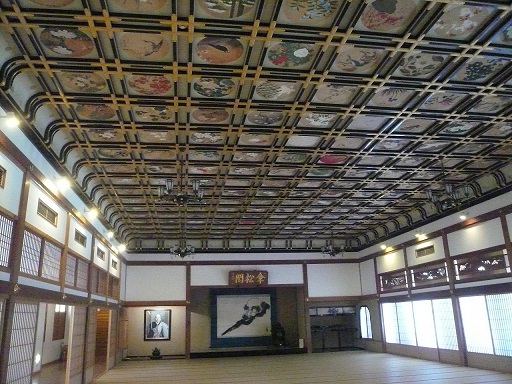
|
Inside of "Shidoden" Hall
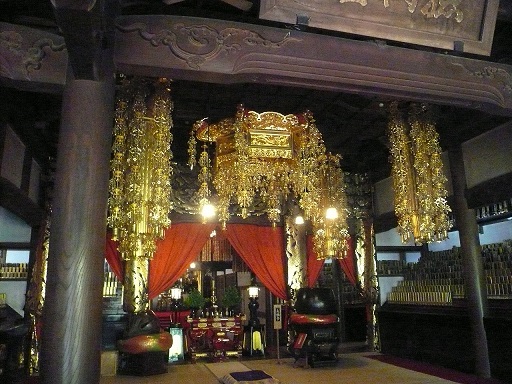
|
|
Two hundread thirty paintings on the ceiling of "Sanshokaku" are very impressive. There are in total five paintings of carp, a lion and a squirrel. It is said your wish comes true if you find paintings of these three animals and a fish.
Finally you will arrive at the "Shichido Garan" buildings.
The "Sammon" (the temple gate), the "Butsuden" (the Buddhist sanctum), and the "Hatto" (the lecture hall) are located in the middle of the "Shichido Garan" buildings. "Tosu" (the toilet) and "Soudo" (the meditation hall) are located on the east side, "Daikuin" (the large kitchen-cum-office) and "Yokujyo" (the bath room) are located on the east side. Corridors connect these seven buildings.
"Sammon", the Temple Gate
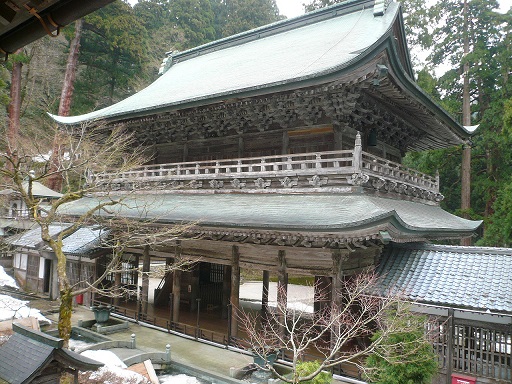
Eiheiji Temple was damaged a couple of times by war fires.
"Sammom" is the oldest remaining building in Eiheiji Temple and was built in 1749.
The Four Devas at the "Sammom" were vividly decorated.
|
|
The Four Devas at the "Sammom"
|
|
|
|
|
As the "Shichido Garan" buildings are located on a steep-side hill, corridors have steep stairs inside.
Currently approximately three hundred ascetic monks are in the Eiheiji Temple and they are conducting very stoic ascetic practices. You will see these monks at the "Shichido Garan" buildings.
But, please pay attention that taking photographs of these monks is strictly prohibited.
The "Butsuden", the Buddhist sanctum
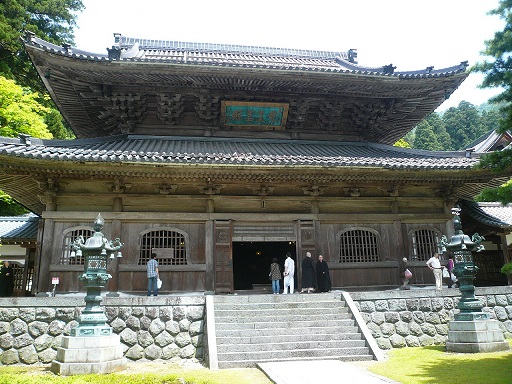
The "Butsuden" (the Buddhist sanctum) was re-built in 1902. The "Shakamuni-butsu", the "Miroku-bosatsu" (Buddhist saint) and the "Amida" Buddha are ensconced in the "Butsuden". These three buddha statues are the principal image of Buddha of Eiheiji Temple.
When you will go up stairs of the left-side corridor, you will see the "Soudo" Hall and "Shoyoden" Hall on your left. The "Shoyoden" Hall is the mausoleum of DOGEN.
|
"Soudo", the Meditation Hall
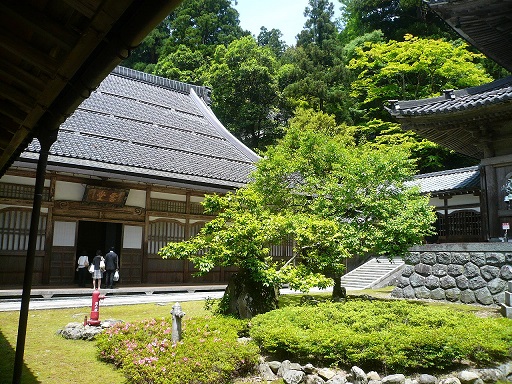
|
"Shoyoden" Hall
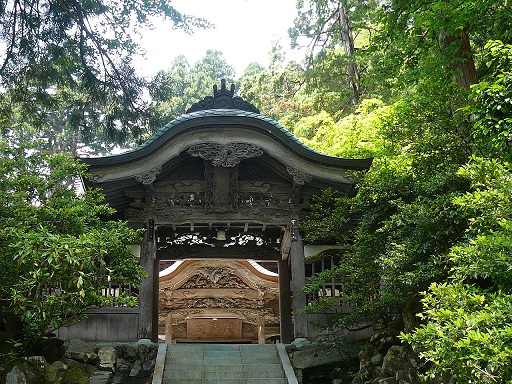
|
|
Finally, you will arrive at the "Hatto" Hall (the lecture hall).
"Hatto" Hall was re-built in 1843. "Hatto" Hall is the largest hall in Eiheiji Temple, with an area of 630 square meters. The canopy is decorated in a golden color. This scenery was very gorgeous and impressive.
On the way back from the "Shichido Garan" buildings, the "Karamon" Gate was seen among the Japanese cedar trees.
You will feel and exposed to the dignified and sanctity atmosphere in Eiheiji Temple.
A "Zen" meditation trial and "Zen" practice trial with a one night stay are available at Eiheiji Temple.
|
|
|
How to get there
From Tokyo, You can take a Tokaido Shinkansen to Maibara and change to a Limited Express "Shirasagi" to Fukui. From Fukui Station, take a bus to Eiheiji Temple, or take a Echizen Railway train on the Katsuyama-Eiheiji Line to Eiheiji-Guchi. A connecting bus is available at Eiheiji-Guchi Station.
Other Historical Sites near by:
Ruins of Maruoka Castle
Heisenji-Hakusan Shrine
Ruins of ASAKURA Clan
Echizen Coast
|
|

 Home Page in Japanese: "Shane's HomePage"
Home Page in Japanese: "Shane's HomePage"

 Home Page in Japanese: "Shane's HomePage"
Home Page in Japanese: "Shane's HomePage"